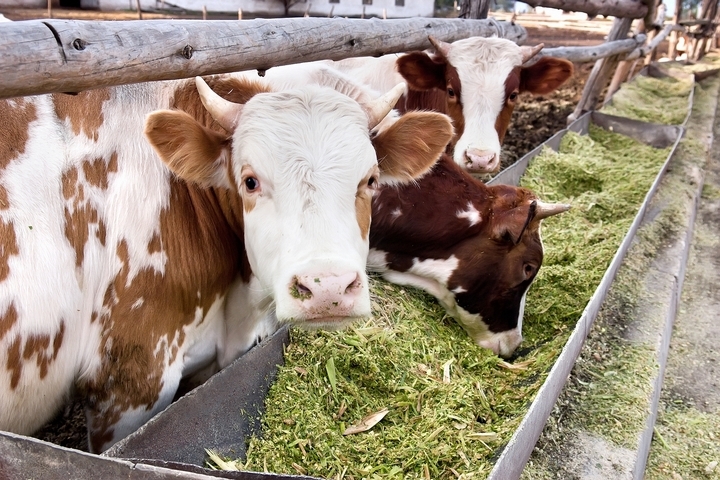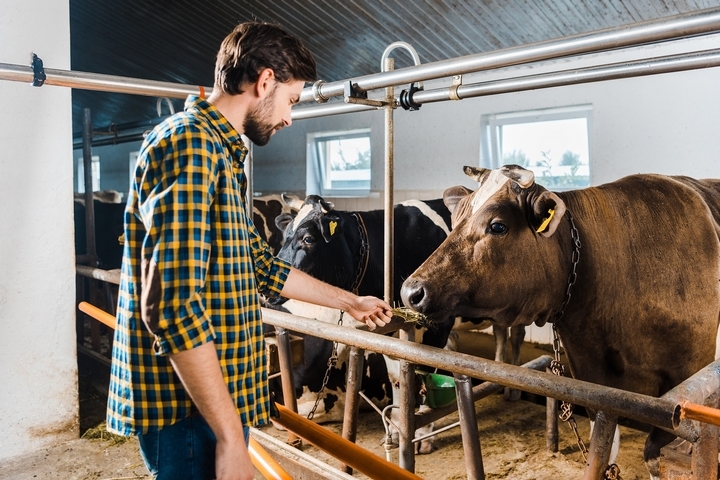Calf rearing refers to the period between birth to 12 weeks, which includes critical health management, feeding, housing, and general husbandry. A successful calf-rearing journey begins as soon as a calf is born, and if not done well, it can pose adverse health issues to the newborn calf.
Farmers can achieve a successful calf-rearing period by implementing these five crucial tips. Calf rearing can be challenging sometimes, so you should engage professionals whenever you get stuck. Even better, you can constantly expand your knowledge and skills in calf rearing by connecting with other farmers, attending livestock exhibitions and subscribing to online courses.
Research shows a 50% mortality rate in the first 24 hours and a 60% within a week due to poor calf rearing. Let’s learn various calf-rearing tips to help cut down the numbers.
Calf Isolation

Isolating the newly born ones is a fundamental part of calf rearing. The aim is to secure them from infections, the transmission of diseases, and other misfortunes. Some ideal calf rearing-isolation tips include:
Embracing Calf Pens
The surroundings where a calf is born and reared can significantly impact its growth and wellness. A calf pen provides adequate space for the specialized attention of calves during the rearing period.
There are three types of calf pens, concrete-floor pens, movable pens, and permanent pens. The size should be approximately 12 feet by 12 feet for temporary barns and 15 feet by 12 feet for permanent ones, while the height should be at least 4 feet tall.
Picking Up Calves Immediately After Birth
Another isolation tip for calf rearing is picking up calves from the mother’s pen immediately after birth for safety measures. However, knowing when your cow has given birth in odd night hours can be difficult.
For more outstanding outcomes, you should probably set alarms through the night when your cow has approached its delivery days while keeping it monitored during the day.
Calf Weaning

One of the most delicate stages of calf rearing is weaning. Even so, there’s nothing to worry about when you have the right tips regarding the process. Weaning refers to feeding young mammals food separate from their original mother’s milk. To wean strategically:
Weigh Your Calves Occasionally
Weighing calves can be beneficial in raising efficiency throughout the rearing period and beyond. One of the significant reasons farmers should weigh their calves occasionally is to develop a strategic weaning plan.
The data collected after weighing guides farmers to understand better when and how to regulate their feed during weaning. It can also be used to recommend changes in diet and suggest more nutrients.
Pasturing Once in a While
Farmers can occasionally pasture their calves during rearing to create a balanced diet. Pasturing also improves body weight and lowers nutritional requirements for calves. When pasture is limited due to excess moisture, drought, and other conditions, farmers can shift to corn gluten feed, digestible fibre feeds, and calf-friendly corn silage.
Nevertheless, calf-rearing farmers should be prepared for high labour needs and related health issues when they put their calves through occasional pasturing.
Hygiene Requirements

Cleanliness
In every stage of calf rearing, top-notch hygiene should remain undebatable and constantly maintained. Whether pens, feeding troughs, drinking buckets, or milking cans, everything should always be cleaned before and after use to keep infections at bay and ensure successful rearing.
Hygiene in calf rearing starts from birth, where the area should be kept clean, letting nature take the lead with soft, dried grass. Additionally, the birthing team must maintain cleanliness and sterility before attending to a delivering cow and its young one.
Maintaining Top-Notch Body Hygiene
Cleaning calves during the rearing period can be challenging but remains essential. Rearing calves can be cleaned in wheelbarrows or large troughs occasionally or whenever they get muddy.
For greater results, don’t forget to use calf-friendly disinfectant sprays and gels on them in every session. In addition, cleaning and disinfecting the feeding and sleeping areas are also crucial parts of calf-rearing hygiene.
Feeding Colostrum

The most precious nutrient to calves at the rearing stage is Colostrum, boasting natural immunoglobulin, vitamins, growth facilitators, and energy levels to keep the young ones safe. Some crucial tips for feeding colostrum as part of calf rearing include:
Considering Colostrum Management
Colostrum management entails laying down ideal timings for feeding to achieve the best results possible. The first milk should be hand-fed to calves at approximately 102oF within six hours of birth. Any colostrum provided later is barely absorbed into the calf’s bloodstream, affecting its immunity in the long run.
Understanding Various Colour Coding Systems
A successful colostrum feeding procedure in calf rearing involves understanding different colour codes and their meanings. For instance, the best colostrum, filled with high levels of beta-carotene, should inhibit an orange or dark yellow colour. White and light yellow colostrum might not be as rich as the former but can also be fed to newborn calves.
Housing Management

Housing is a crucial part of calf rearing, requiring farmers to construct high-quality barns for the safety of their cattle and newborn calves. Ideal calf rearing-housing involves storing newborns in freshly cleaned pens that haven’t been used by a different calf recently and are located some meters from the feeding bay and cow shed.
Additionally, calf pens and barns should be constantly disinfected and controlled against insects and rodents.




